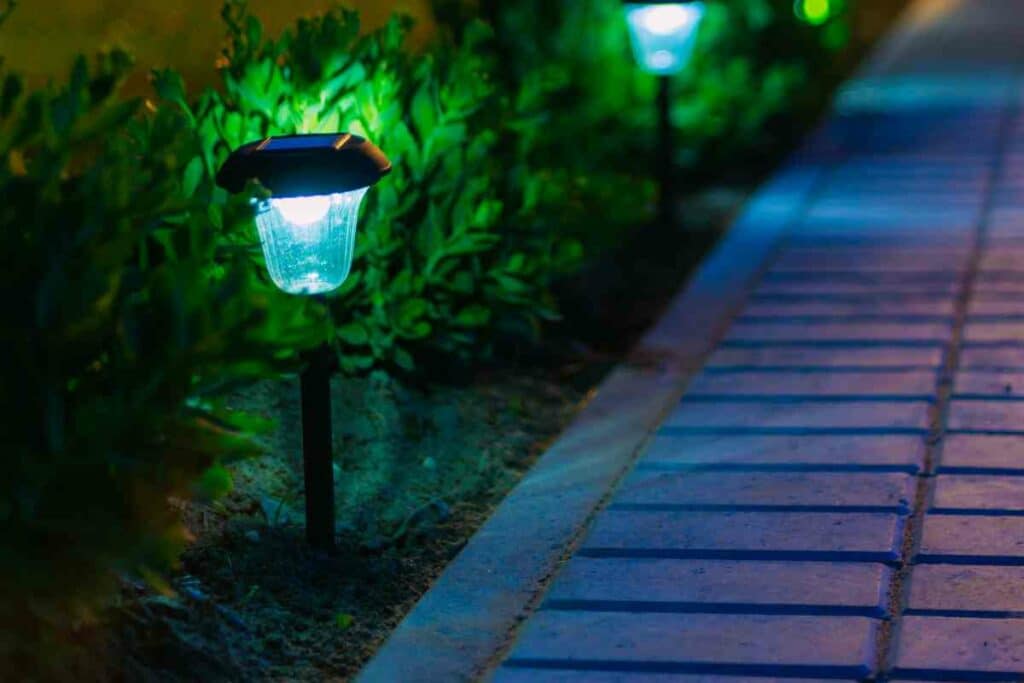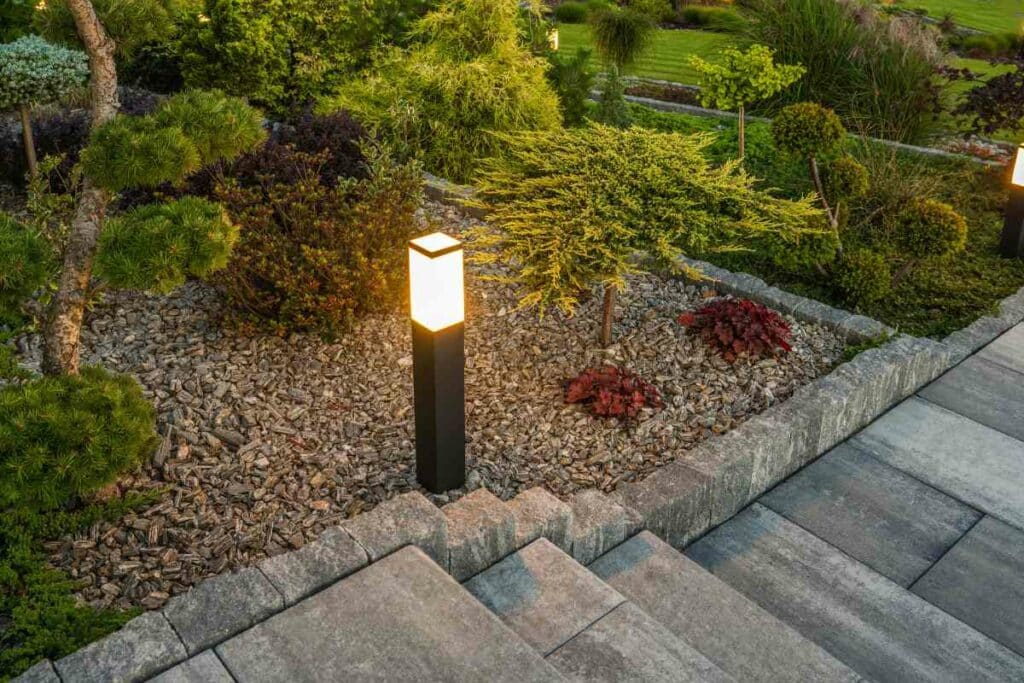Throughout history, humans have possessed an inherent curiosity, constantly driven to seek answers to various questions.
Among the many questions that occupy the minds of many, is the optimal method to illuminate our landscapes.
With outdoor lighting systems, should you opt for a low-voltage wired system or embrace solar-powered lighting?

In this comprehensive guide, I will shed light on this and ultimately present a verdict on the best lighting system for your needs
Both low-voltage and solar lighting systems can offer impressive levels of illumination, depending on their quality.
However, their fundamental distinction lies in how they are powered and the ease of their installation. One system relies on the boundless energy of the sun, while the other connects directly to the main household electrical system.
Scroll on for a deeper dive into these systems.
Solar Outdoor lights
Solar lights have become all the rage for DIY enthusiasts due to their affordability and ease of installation.
The concept behind solar lights is relatively straightforward: each fixture has a solar panel that captures sunlight and converts it into electrical power stored in rechargeable batteries. Once the light is staked into the ground, it should work without further intervention.

Outdoor solar lights do not require complicated wiring and are usually considered environmentally friendly. These fixtures typically include a photocell (light sensor) that automatically turns the light on at dusk and off at dawn.
However, the ease of installation and cost savings often come at the expense of quality and limited customization options. Most solar fixtures are made of flimsy composite plastic materials.
The ground stakes are prone to breakage due to animal interference, mowing, or snow removal.
Another issue is the wear of the batteries over time, which limits their power storage capacity and consequently reduces their brightness levels. The need for battery replacement also undermines their environmental friendliness.
Moreover, the light sensor may malfunction, disrupting the proper ON and OFF cycles.
Additionally, solar lights rely on sunlight, making them unreliable during inclement weather or in winter when sun exposure is limited.
Low Voltage wired lighting
Low-voltage lighting systems are commonly connected to the household power outlet through a transformer.
The transformer converts the mains voltage of approximately 110 volts to a lower voltage ranging from 12 to 24 volts.

Typically, the installation process involves wiring the lights to a low-voltage transformer using buried cables, which often requires the expertise of a qualified electrician.
These systems may be equipped with a control timer or photocell that automatically turns the lights ON and OFF as needed. Some models can also be integrated into a smart home Wi-Fi system, allowing convenient management of all lights through a handheld device.
Furthermore, low-voltage systems offer great versatility and customization options to meet specific needs.
They provide a wide range of brightness levels, beam spreads, color temperatures, styles, and placement choices.
Although the initial purchase and installation costs may be higher compared to solar-powered alternatives, low-voltage systems generally deliver superior quality and increased flexibility. The fixtures are often crafted from durable materials like brass, copper, or stainless steel, ensuring enhanced longevity. There are also more affordable plastic or aluminum options available.
Low voltage systems do not rely on sunlight for operation as long as there is a power supply to the house. They maintain consistent brightness levels regardless of weather conditions.
Additionally, these systems are safe to use, with minimal risks of electrical shocks due to the lower voltage required to power the lighting system.
Solar Vs Low-voltage: Which is better?
If you have limited experience with lighting systems and electricity but are interested in exploring landscape lighting, solar-powered lights may be a suitable choice.
These lights can provide illumination for approximately 8 to 12 hours, depending on their lumen output, when fully charged. However, their effectiveness may be reduced on cloudy or winter days.
Solar lights have a straightforward installation process as they do not require cables. The cost of solar light systems varies based on the quality and size of the setup.
Some are designed to withstand harsh weather conditions while others may be quite flimsy.
Keep In Mind – Professional installers are often required to set up low-voltage systems. They handle the underground cabling and ensure proper connection of the transformer to an electrical outlet. These systems offer consistent performance throughout the year, regardless of weather, season, or location.
If you prioritize longevity and reliability, wired landscape lighting is the way to go.
But ultimately, the choice between solar-powered and wired lighting depends on your specific needs and budget.




